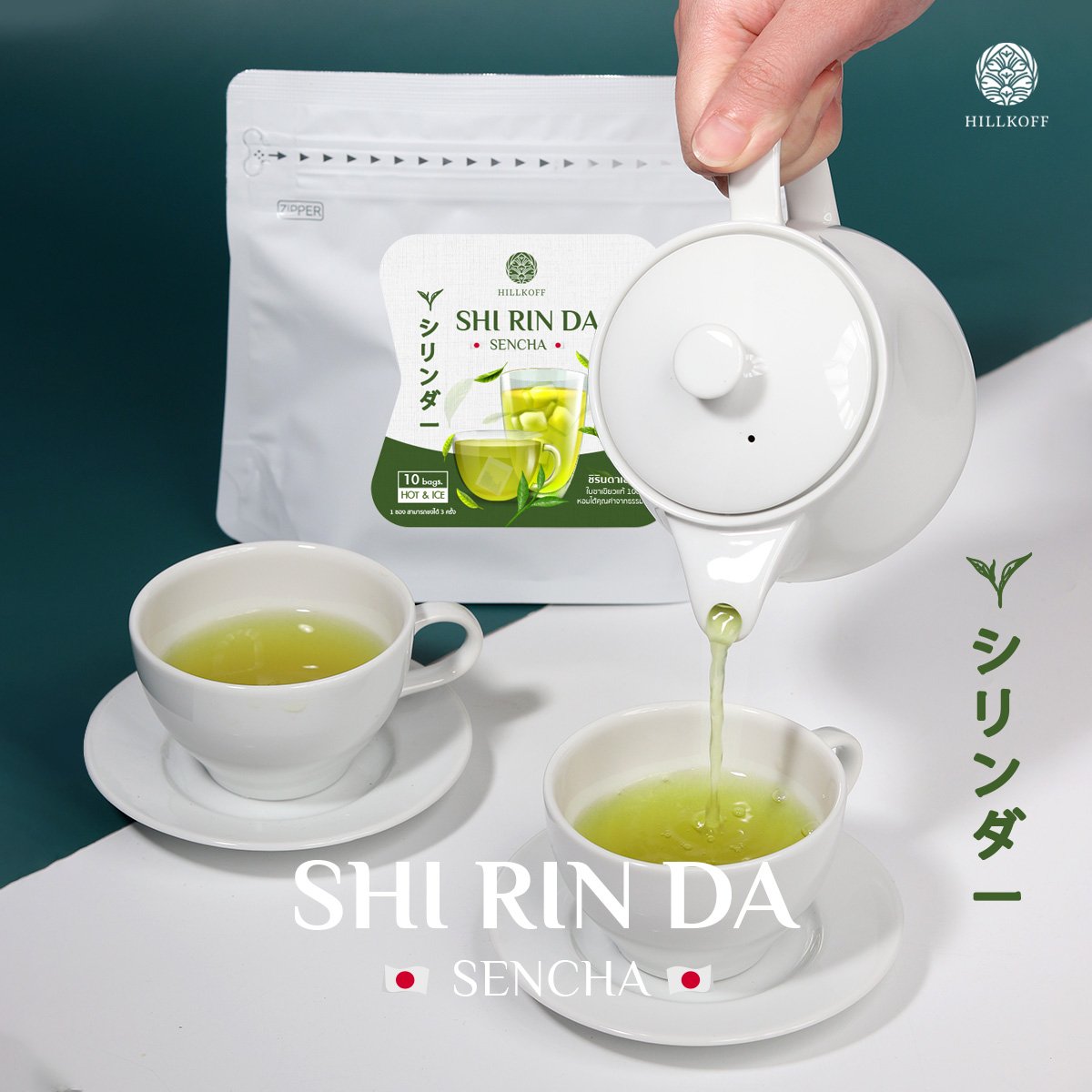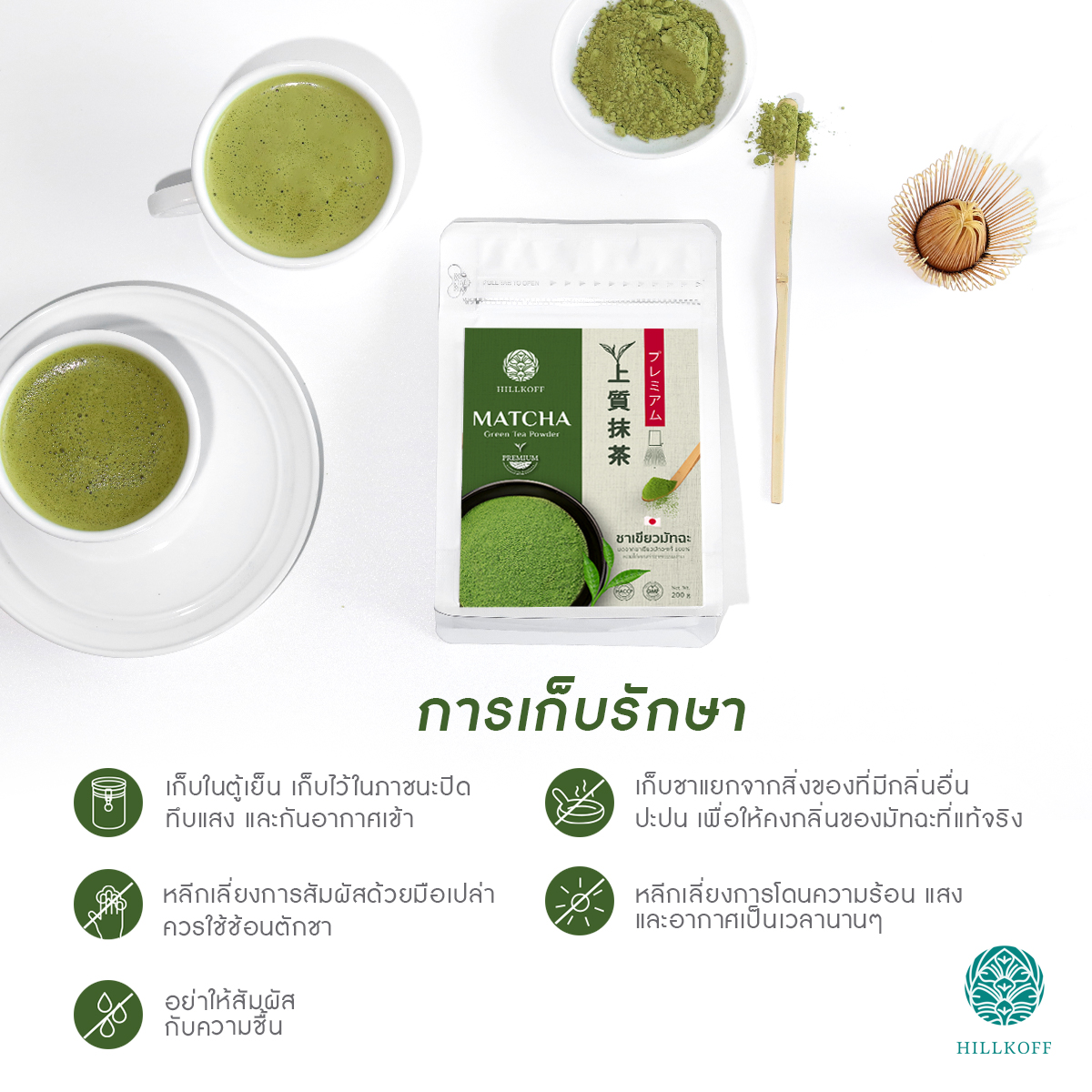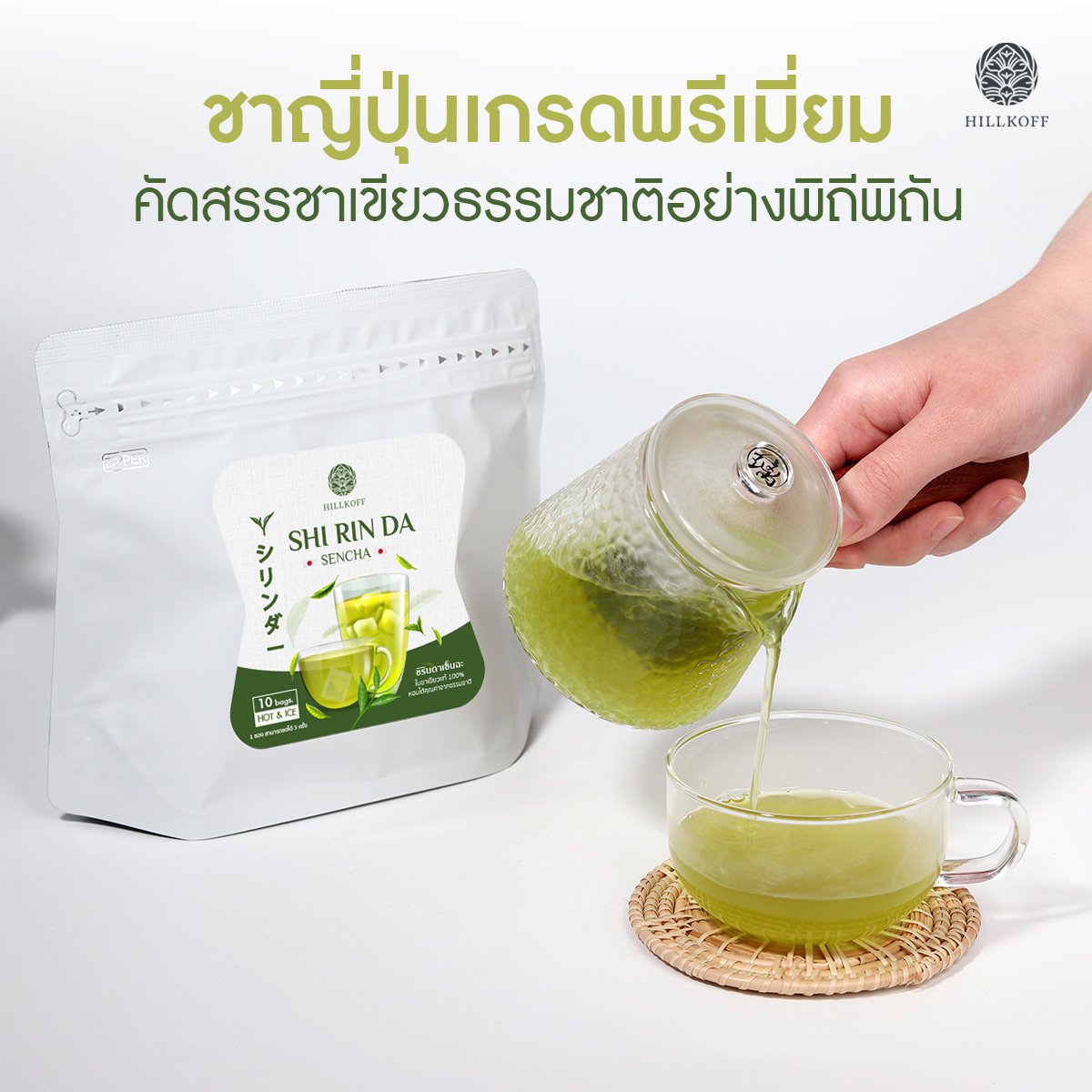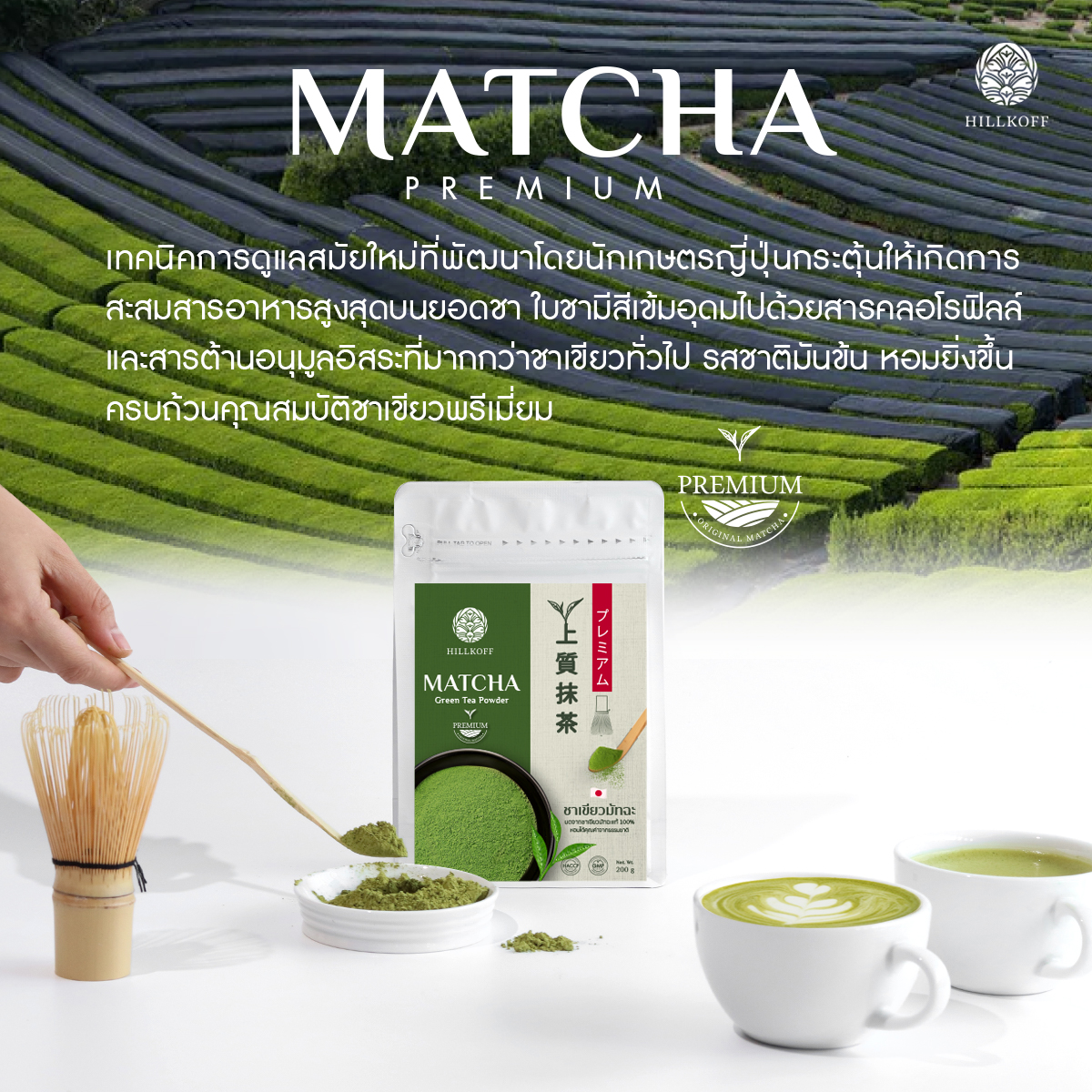Last updated: 7 ก.พ. 2568 | 21427 จำนวนผู้เข้าชม |

ว่าด้วยชาเขียวญี่ปุ่น ชามัทฉะกับเซนฉะ ต่างกันยังไงน่อ…?
นอกเหนือจากความนิยมในการดื่มกาแฟแล้ว การดื่มชาก็กำลังเป็นที่นิยมกันมากขึ้นเรื่อยๆ สังเกตได้ว่าคาเฟ่ที่บริการเฉพาะเครื่องดื่มชานั้นก็มีมากขึ้นเหมือนกัน และในร้านก็มักจะมีเมนูยอดฮิตติดอันดับโลกก็คือชามัทฉะกับชาเซนฉะ แต่มันต่างกันยังไงล่ะ? เรามารู้จักกันก่อนจะได้เลือกดื่มกันได้ตามความต้องการให้อร่อยกันอย่างเต็มที่จ้า
มัทฉะกับชาเซนฉะ นั้นมีต้นกำเนิดมาจากประเทศญี่ปุ่นที่มีเรื่องราวยาวนานมาเป็นร้อยปีเลยทีเดียวชาสองชนิดนี้เป็นชาเขียวที่มีลักษณะต้นชาที่เหมือนกัน แต่ในความแตกต่างนั้น อยู่ในส่วนของวิธีการปลูก การผลิต และแปรรูปที่ต่างกัน

ชาเซนฉะ (Zencha Tea) โดยลักษณะทั่วไปแล้วชาเซนฉะ จะอยู่รูปแบบของชาใบ ที่ผ่านการตากแห้งมาแล้ว และถูกนำมาบดแบบหยาบ ในการชงดื่มชาเซนฉะนั้น ใบชาจะไม่สามารถละลายไปกับน้ำได้ การชงชาเซนฉะ (Zencha Tea) เราจะใช้วิธีการแช่และกรองใบชาเพื่อชงดื่ม การกรองนั้นทำได้ด้วยการต้มชาและกรองด้วยผ้าขาวสะอาด หรือให้อุปการณ์ชงอย่าง French press ในการแช่กรองชา ชาเขียวที่ได้ออกดื่มนั้น จะมีลักษณะเป็นชาเขียวใส ไม่ฝาด ไม่ขม มีความหอมนุ่มทีเดียว

ชามัทฉะ (Matcha) เป็นใบชาแท้มีลักษณะเป็นผงที่บดละเอียด ความคล้ายผงแป้งสามารถละลายน้ำได้ และ หากต้องการเพิ่มความพิเศษเพื่อให้ได้มัทฉะคุณภาพพรีเมี่ยมนั้น ในแบบฉบับเกษตรกรญี่ปุ่น ต้นชาจะถูกคลุมเพื่อให้โดนแสงแดดน้อยที่สุดหรือปลูกในร่มก่อนช่วงเก็บเกี่ยว 1 สัปดาห์ เพื่อให้ใบชาเก็บกรดอะมิโนที่เรียกว่า L- theanine (แอล-ธีอะนีน มีคุณสมบัติที่ช่วยให้ร่างกายผ่อนคลาย) เมื่อถึงช่วงเวลาเก็บเกี่ยวใบชาจะมีสีเขียวเข้มสดฉ่ำ ช่วยให้ใบชามีรสชาติหวานขึ้น ส่วนความขมและความฝาดลดลง ซึ่งเมื่อถึงเวลาเก็บเกี่ยวใบชานั้นจะเก็บในส่วนของยอดใบชาอ่อนแค่สามใบแรกเท่านั้น และเก็บในช่วงเวลาเช้า หลังจากนั่นจะทำการแปรรูปมัทฉะด้วยวิธีการอบไอน้ำและเป่าใบชาให้แห้งน้ำในใบชาจะระเหยออกไปเอง เพื่อหยุดปฏิกิริยาออกซิเดชันที่จะไปเปลี่ยนองค์ประกอบทางเคมีของชาที่จะมีผลที่ทำให้ชาฝาดหรือเปลี่ยนสี และกลิ่นหอมของตัวชานั่นเอง วิธีการนี้ช่วยให้ใบชาไม่ศูนย์เสียคุณภาพ ขั้นตอนสุดท้ายเพื่อให้ออกมาเป็นผงชามัทฉะที่สมบูรณ์แบบใบชาจะถูกนำไปบด (ในสมัยก่อนการบดจะบดด้วยครกหิน) ให้ละเอียดเหมือนแป้ง การชงชามัทฉะ ด้วยตัวผงชามัทฉะเมื่อทำการชงจะได้ชาเขียวที่เข้มข้น เราสามารถเลือกผสมผงชามัทฉะกับน้ำร้อน น้ำเย็น หรือนมเย็นได้ ในการชงด้วยน้ำร้อนอุณภูมิของน้ำร้อนควรอยู่ที่ 75องศาเพราะถ้าหากใช้น้ำร้อนจัดเกินไปจะทำให้รสชาติชามีความฝาดและขมมากขึ้น ในการผสมชาเพื่อตีชาให้เข้ากันเพื่อให้เกิดฟองชาที่เนียนนั้นเราควรใช้แปรงตีชา (Chasen) ซึ่งทั่วไปจะมีอยู่สองแบบ คือแบบไม้ไผ่ และเรซิน การตีชาจะตีเป็นรูปตัว W เพื่อช่วยให้ผงชามัทฉะละลายได้ดีที่สุด และเกิดฟองเนียนฟู

วิธีการเก็บรักษา
ชาเซนฉะและชามัทฉะนั้นเพื่อรักษาคุณภาพไว้ให้ได้มากที่สุด เราควรเก็บในตู้เย็น ไว้ในภาชนะปิดทึบแสงและกันไม่ให้อากาศเข้าได้ เมื่อนำมาชงให้หลีกเลี่ยงการสัมผัสด้วยมือเปล่าเพราะมือของเราอาจจะมีความชื้นติดอยู่เมื่อสัมผัสกับชาจะทำให้เสียรสชาติ ให้ใช้ช้อนในการตักผงชามาชง และเมื่อเปิดถุงแล้วควรปิดให้สนิทโดยการปิดให้ไล่อากาศออกให้มากที่สุดเพื่อไม่ให้ความชื้นและอากาศเข้าไปในตัวชา หลีกเลี่ยงการโดนแสง ความร้อนและอากาศเป็นเวลานานๆ ในภาชนะที่เก็บชาต้องไม่มีกลิ่นอื่นๆคงค้าง เพราะตัวชาเองมีคุณสมบัตรในการดูดซับกลิ่น ถ้ามีกลิ่นที่แปลงปลอมชาก็จะดูดกลิ่นเข้าไปแล้วทำให้ผงชาเสียคุณภาพไปทันที
เรียบเรียงโดย Hillkoff Academy
Matcha green tea VS Sencha green tea, What is the difference ?
Matcha and Sencha tea originated in Japan with over a hundred years of history. The two types of tea are the same green tea tree characteristic but the difference lies in terms of different methods of cultivation, production and processing.
Sencha Tea, in general, sencha tea will be in the form of tea leaves that have been dried and were used to grind coarsely to brew sencha tea. Tea leaves will not be able to be soluble in water. Brewing Zencha Tea, we will soak and filter tea leaves for drinking. Filtering can be done with boiled and filtered with a clean white cloth or equipment such as French press. The green tea that was filtered was clear green tea, no astringent, no bitter and had a soft aroma.
Matcha tea is a pure tea leaves like a powder that has been ground and water soluble. For additional extra premium quality into matcha as a Japanese Farmer's edition, the tea plants should be covered from sunlight or planted indoors a week before harvesting. This makes the tea leaves retain higher an amino acid that is called L-theanine. (L-theanine can help the body to relax). Once almost harvested, the tea leaves will have a deep and juicy green color that makes a sweeter taste and the bitterness and astringency are decreased.
When it's time to harvest, the leaves will be collected from the tops of the tea leaves, just 3leaves from the top. They are collected during the morning time only. After that, the matcha is processed with steam and then blow dried. The water in tea leaves will evaporate by itself. This to stop oxidation reactions that will change chemical composition of the tea that will have the effect of making the tea astringent or discolored and the aroma of the tea. This method helps tea leaves not waste the quality. The final step, tea leaves have to turn to be ground for the perfect matcha powder as fine as flour. (In the past, it was ground with a stone mortar) To brewing Mutcha tea, we can mix matcha tea powder with hot, cold water or cold milk. For hot water, the temperature should be around 75 degrees. If the water is too hot, it will make tea more astringent and bitter. Blending tea in general, we beat the tea with a tea brush (Chasen) to create a smooth tea bubble. There are two types of Chasen: bamboo brush and resin brush. W-shaped brush beating will help the matcha powder to dissolve smooth and fluffy bubbles.
The way to preserve Sencha tea for their quality is as good as possible. We should keep it in the refrigerator or in an opaque and airtight container. When brought to brew we should avoid touching the tea with bare hands because our hands may have moisture on it. Touching the tea will spoil the taste, so using a spoon to scoop the tea powder to brew may be better and when the bag is opened, it should be closed completely once done brewing.
Avoid moisture and air getting into the tea. Avoid exposure to light heat for a long time. The tea storage container must have no other odors remaining because the tea leaves have the ability to absorb odors. If there is any counterfeit odor, the tea will absorb the smell and make the tea powder lose its quality.
Article by Hillkoff Academy.